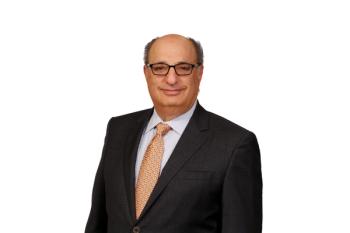
- Vol. 95 No 07
- Volume 95
- Issue 07
How physicians can stretch their college dollars
Saving for college is one thing, but making the most out of those savings is something else entirely.
Saving for college is one thing, but making the most out of those savings is something else entirely. Fortunately, there are concrete steps physicians can take to make sure they stretch those education dollars.
How early should you develop a plan? Ideally, start making financial adjustments when your child enters middle school. But even if your college-bound child is already in their senior year of high school, there are still strategies to reduce their college costs and decrease their Estimated Family Contribution (EFC).
This article appears in the 4/10/18 issue of Medical Economics.
Let’s start with some of the short-term strategies that everyone can take advantage of-like what funds to use to pay for college costs.
529s are great but…
One mistake parents sometimes make is to pay all of their college costs out of their 529s. Why is this bad? Because doing this may make some parents ineligible for the American Opportunity Tax credit, which taxpayers can claim for the first four years of higher education tuition, course materials (such as books), and required fees. The credit is worth up to $2,500 per year based on adjusted gross income.
Since you’ve already received a tax benefit with the tax-free distribution from your 529, the government says you can’t “double-dip” and also claim the $2,500 American Opportunity Tax credit. You can use one or the other, but not both. Your tax adviser can work with you to figure out how to use your 529 funds in a way that will help you take advantage of this credit.
Beware generous grandparents
If a grandparent gives your child money for college, even if it’s under the $14,000 cap of what the IRS considers a tax-free gift, that money can still cost you and your child.
That’s because of how FAFSA (Free Application for Federal Student Aid) rules determine income. Any money a grandparent gives a student over the income protection allowance of $6,570 is assessed as untaxed student income at 50 cents on the dollar. That’s regardless of whether the grandparent gives the money directly to the child or sends a payment to the school to cover tuition.
How much could that cost you? A $16,300 gift from grandma for the benefit of the child raises the family’s EFC by $5,000 to $8,000, depending on whether the student has already reached their income protection allowance. That doesn’t mean grandparents shouldn’t help out at all. Some experts suggest waiting until after students are upperclassmen and have filed their last FAFSA before withdrawing money from 529s.
In the clear with the IRS, but not FAFSA
Thinking of dipping into your retirement fund to pay for college? Think again. Yes, the IRS waives the 10 percent early withdrawal penalty on funds a parent withdraws for college. The FAFSA, on the other hand, calculates that money as added income, usually assessing it at a rate of 47 percent.
Not all calculations are equal
Don’t be fooled into thinking that all schools calculate income in the same way. Federal methodology does not use home equity to determine EFC but institutional methodology does. Know which methods the schools being considered use before applying can avoid disappointment when those awards letters arrive.
Remember, no award is final
Just because your child receives a financial aid award letter from a college doesn’t mean that’s the end of the story. Research how to write an effective appeals letter or consult an experienced college coach, and then appeal that award. The reasons you might appeal an award include changes in family income, unexpected medical expenses, or simply if one school offers your child a more generous financial aid package than another school with a similar program and selectivity.
The longer view
As for long-term strategies, look first at where you hold your savings. Saving in your child’s name is never a good idea. A child’s income is assessed at a higher rate than their parents-roughly 15 percent to 20 percent higher.
HOT TOPIC:
Asset awareness
Where parents hold their own assets makes a difference as well. Physicians will want to hold their assets in their business during the college years. That’s because business assets aren’t used to determine the EFC under the federal methodology as long as your business has fewer than 100 employees. This is not true, however, under the institutional methodology and you will need to talk to a financial expert who understands the rules to sort through everything if you are considering one of those colleges. On the other hand, personal assets are assessed at a rate of 5.64 percent.
Business restructuring
Physicians also should consider restructuring their business. Converting a sole proprietorship to an S Corp or converting a “pass-through income” S Corp into a C Corp will reduce adjusted gross income and increase potential for financial aid. Both an S Corp and a C Corp will provide protection from personal liability. In general, corporations prefer C Corps because they provide more flexibility, including allowing them to have global investors, more than 100 shareholders, and diversity in classes of stock. Small businesses tend to prefer S Corps because profits are taxed only at the shareholder level. C Corps, on the other hand, are taxed at the corporate and again at the shareholder level.
Both an S Corp and a C Corp will help reduce adjusted gross income, which FAFSA calculates at up to 47 percent. If you’re concerned about limiting your access to cash, remember that FAFSA rules allow business owners to take personal loans from their businesses without penalty. Of course, you’ll want to consult legal and tax professionals before making any changes.
Family matters
Finally, don’t discount nepotism. Hiring a spouse or child can help save on your family’s medical costs when you set up a medical reimbursement plan (under IRS Section 105). And your child can earn up to $6,570 per year without having that income assessed under FAFSA rules.
Of course, rules are often changing. To ensure you make the most of your money, it’s best to consult with a CPA and a college planning expert who will give you the most up-to-date advice on how to stretch your college dollars.
Jim Slowik is the chief college funding strategist of
Articles in this issue
over 7 years ago
Telehealth as a competitive edge, not a competitor's advantageover 7 years ago
Improve your claim denial managementover 7 years ago
Telemedicine licensure and related challenges for physiciansover 7 years ago
How to select the right telemedicine vendorover 7 years ago
Healthcare is going gangbusters for the economyNewsletter
Stay informed and empowered with Medical Economics enewsletter, delivering expert insights, financial strategies, practice management tips and technology trends — tailored for today’s physicians.




















